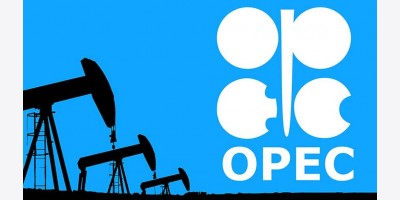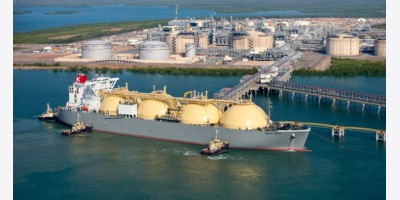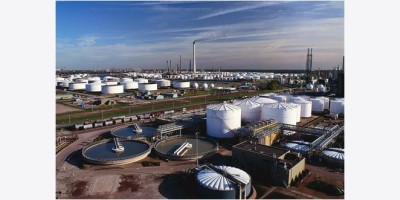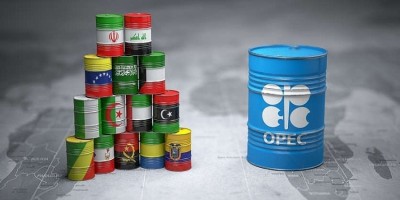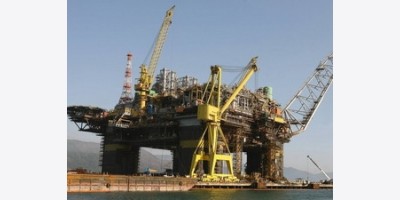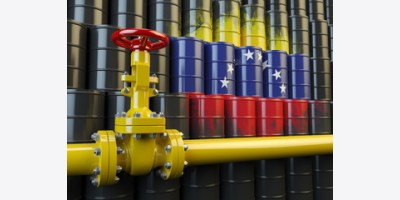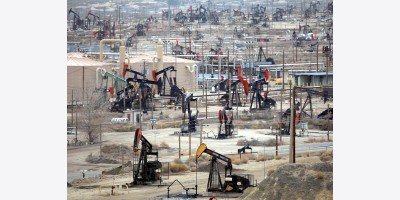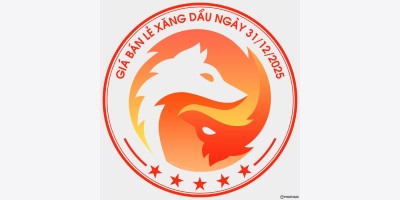U.S. Shale Oil Growth Slows as Price Crash Idles Drilling Rigs
by Daniel Murtaugh
(Bloomberg) -- The biggest slowdown in oil drilling on record is showing signs of reining in the U.S. shale boom.
U.S. shale oil output is expected to post the slowest growth in more than four years in April, the Energy Information Administration said today. That follows a 41 percent plunge since December in the number of drilling rigs seeking oil.
A slowdown in U.S. output would come at the same time that refineries are expected to return from seasonal maintenance and bring relief to an oil market that has seen prices decline more than 50 percent since June. Companies had 444.4 million barrels of oil in storage in the U.S. as of Feb. 27, the most in weekly records dating back to 1982.
“You have refineries coming back out of maintenance, and production getting cut back,” said Carl Larry, head of oil and gas for Frost & Sullivan LP in Houston. “Everything could come together where, all of a sudden, everyone thought there was plenty of supply and there’s not.”
Oil production from six major U.S. shale plays will be 5.6 million barrels a day in April, an increase of 298 over March,. according to the EIA’s estimate. It’s the smallest projected increase since February 2011.
Permian Rising
Output from the Eagle Ford in Texas, the second-largest oil field in the U.S., is expected to drop by 10,000 barrels a day. Production in the Bakken region in North Dakota is expected to decline by 8,000. It’s the first month both regions are forecast to have shrinking production since January 2009.
Production in the Permian Basin in West Texas and New Mexico, the largest U.S. oil field, will rise by 21,000 barrels a day to 1.98 million.
Refineries processed 15.1 million barrels of crude a day the week of Feb. 27. Last year, crude demand rose from 15 million barrels a day in the middle of March to 16.6 million in July. Refineries typically shut units for planned maintenance in the late winter and early spring to be able to run at full capacity during the summer driving season.
The EIA’s oil-production estimates are based on the number of drilling rigs in different plays and calculations of how productive each piece of equipment is. The number of rigs drilling for oil fell to 922 on Friday, according to oilfield service company Baker Hughes Inc. Oil rigs in the U.S. peaked in October at 1,609.
Canada Stocks Fall a 2nd Day as Oil Drops on China Demand
(Bloomberg) -- Canadian stocks fell a second day, dropping to a five-week low, as commodities producers retreated after China reduced imports a second month.
BlackBerry Ltd. lost 7.4 percent after analysts at Goldman Sachs Group Inc. lowered their rating for the stock. Concordia Healthcare Corp. soared 26 percent after agreeing to buy assets from privately held Covis Pharma Holdings Sarl for $1.2 billion. Suncor Energy Inc. lost 2.6 percent for a fourth straight loss, the longest streak since November.
The Standard & Poor’s/TSX Composite Index fell 98.01 points, or 0.7 percent, to 14,854.49 at 4 p.m. in Toronto, the lowest close since Jan. 30. The benchmark Canadian equity gauge lost 1.9 percent last week, its worst since Jan. 9, to close at the lowest level since Feb. 2.
Pacific Rubiales Energy Corp. fell 9.6 percent and Penn West Petroleum Ltd. declined 6.4 percent to pace a 1.9 percent drop in energy producers. Six of the 10 industries in the S&P/TSX retreated on trading volume 19 percent lower than the 30-day average.
Barrick Gold Corp. and Goldcorp Inc. slumped at least 2.5 percent as raw-materials producers tumbled 1.6 percent. Raw-materials and energy make up about a third of the S&P/TSX.
Chinese crude imports fell by 2.43 million metric tons in February to 25.6 million tons. The country’s Lunar New Year crimped imports of oil and other commodities including iron ore and copper.
Concordia surged to a record. The Toronto-based company will buy almost all of the commercial assets of Covis Pharma Sarl and Covis Injectables Sarl to diversify sales and boost margins. The portfolios include 18 branded and generic products.
Canadian National Railway Co. slipped 1.1 percent after one of its eastbound trains carrying crude oil derailed and caught fire on March 7.
Gary Shilling says oil is going to $10
Shane Ferro
Gary Shilling thinks the price of oil is going way lower.
The economist and financial analyst wrote an op-ed for Bloomberg View discussing the various reasons why he thinks the price could get down to $10-20 per barrel.
Basically, supply keeps increasing while demand is shrinking.
Here's an excerpt that pretty clearly lays it out:
U.S. crude oil production is forecast to rise by 300,000 barrels a day during the next year from 9.1 million now. Sure, the drilling rig count is falling, but it’s the inefficient rigs that are being idled, not the horizontal rigs that are the backbone of the fracking industry. Consider also Iraq’s recent deal with the Kurds, meaning that another 550,000 barrels a day will enter the market.
While supply climbs, demand is weakening. OPEC forecasts demand for its oil at a 14-year low of 28.2 million barrels a day in 2017, 600,000 less than its forecast a year ago and down from current output of 30.7 million. It also cut its 2015 demand forecast to a 12-year low of 29.12 million barrels.
And for more on how Shilling sees the oil market, his submission to our latest most important charts in the world feature is a chart that he doesn't think OPEC will like all that much.
Here's how the price of oil has looked over the past year:
http://static6.businessinsider.com/image/54e37a536da811fb18d059ce-1200-800/fredgraph-97.png
GOLDMAN: Oil prices need to fall a lot lower for the market to get to the equilibrium it needs
Shane Ferro
Lower oil prices have forced energy companies to shut down many of its least profitable rigs.
However, actual oil production has yet to fall as the active rigs are substantially more efficient and cost-effective.
As such, Goldman Sachs analysts are convinced prices will go a lot lower, and will need to stay low in order to get to the point where rig shutdowns lead to a significant pull back in production. From Goldman:
While US [exploration and production companies] are indicating a greater focus on reducing capex and balancing capex and cash flow, we expect that lower prices will be required in order for the capex guidance and rig cuts to materialize into sufficiently lower US production growth given: (1) we expect high-grading to become more apparent, translating into more production per rig in the most efficient counties, (2) the current rig decline can reverse given flexibility in cutting and bringing back non-contracted rigs (at a lower cost and with hedging), and (3) rising uncompleted well backlog leaves risk to our bottom-up production growth estimate as skewed to the upside at higher prices and into 2016. Finally, our larger cost deflation expectation vs. company guidance also leaves risk to production growth as skewed to the upside for the same capex/cash flow financial balance.
To reiterate, 1) production is becoming more efficient, and 2) even though US oil producers have pulled back on investment as prices have plunged, they all seem to have their finger on the trigger to get things going again.
Therefore, prices need to stay low or keep going lower in order for producers to really be discouraged. In the second of the two charts above, you can see the "war chest" of uncompleted wells that's building. There's a huge fleet ready and waiting to start pumping.
Goldman thinks the rig count needs to keep dropping. WAY down. Down to 2009 levels (see the above chart). But that might not happen, and here's why:
This desire to ramp up activity is not only visible through comments on earning calls and a focus on building an uncompleted well war chest, but also through the significant equity issuance that has occurred over the past month. With E&Ps focusing on reducing leverage and the equity market showing strong appetite for these issuances, producers will be better positioned to deliver strong production growth later this year and into 2016, undermining the market rebalancing. While we believe shale is ultimately the solution to meeting demand growth medium term, production growth still has to be throttled back in the near term.
By reducing leverage and shifting toward a more equity-heavy capital structure, these companies give themselves some financial flexibility as the lower interest expenses mean they can operate at thinner margins without an increased risk of defaulting on debt.
http://static6.businessinsider.com/image/54fdc53c6bb3f750417376ec-787-1570/rig-count.png
http://static6.businessinsider.com/image/54fdc53c6bb3f750417376ec-787-1570/rig-count.png
GOLDMAN: This oil price rally won't last
A gas flare is seen at an oil well site. Gas flares are created when excess flammable gases are released by pressure release valves during the drilling for oil and natural gas.Getty Images/Andrew Burton
After a brief recovery, the price of oil is likely to go back down as global production ramps up.
In a new research note, Goldman Sachs commodities analyst Damien Courvalin predicts that after a couple of months of lower global production — mostly because of bad weather and a little bit due to violence — things are going to ramp up again in March, sending prices lower.
Here's what the production picture looks like, according to the Courvalin:
Weather, violence or sanction-related supply disruptions in Iraq, Libya and Iran have taken 885 kb/d off the global market in January-February relative to December. While there are risks that the violence-related disruptions extend in Libya, normal weather in Iraq could see exports recover by 300 kb/d in March with Iran potentially adding another 265 kb/d in April. All along, Russia, Brazil, Saudi and US production have continued to grow sequentially.
While demand for oil has also been strong, Courvalin expects that to level off somewhat, both because winter is coming to an end and because there have been weak manufacturing numbers out of China and India.
Goldman is predicting $40/bbl oil over the next two quarters, with risk skewed to the upside, and $65/bbl oil in 2016, with risk skewed to the downside.
Read more: http://www.businessinsider.com/goldman-40-oil-could-be-coming-2015-3#ixzz3Tw7OZN3z
http://static2.businessinsider.com/image/54fdc164eab8ea7e5f7039b2-1200-750/cddd-3.png
Brent Oil Falls on Chinese Data: WTI Gains on Slower Supply Gain
(Bloomberg) -- Oil fell in London for a fourth day after China reduced crude imports. Futures advanced in New York after an industry survey was said to report a slowdown in crude stockpile increases at Cushing, Oklahoma.
Brent slid 2 percent after a report showed Chinese crude imports fell 8.7 percent in February from the previous month. West Texas Intermediate futures climbed after Genscape Inc. was said to report a smaller inventory increase at Cushing, the delivery point for WTI traded in New York, according to analysts including Carl Larry, head of oil and gas for Frost & Sullivan LP in Houston.
“Brent is moving lower in response to the Chinese demand numbers,” Bob Yawger, director of the futures division at Mizuho Securities USA Inc. in New York, said by phone. “The Chinese data had little impact on WTI.”
Oil slumped almost 50 percent in 2014 as expanding U.S. stockpiles and production worsened a global supply glut. While oil prices have rebounded this year, the rally may reverse as crude inventories increase, according to Goldman Sachs Group Inc. Output continues to grow, even as the number of U.S. rigs seeking oil dropped for a 13th week to the lowest since April 2011, according to Baker Hughes Inc.
Brent for April settlement declined $1.20 to end the session at $58.53 a barrel on the London-based ICE Futures Europe. It was the lowest close since Feb. 12. The volume of all futures traded was little changed from the 100-day average at 3:01 p.m. in New York.
WTI Increase
WTI for April delivery rose 39 cents, or 0.8 percent, to settle at $50 a barrel on the New York Mercantile Exchange. Volume was up 23 percent from the 100-day average. The U.S. benchmark crude settled at a $8.53 discount to Brent, compared with $10.12 at Friday’s close.
Chinese crude imports fell by 2.43 million metric tons in February to 25.6 million tons, a second monthly decrease. The country’s Lunar New Year holiday crimped imports of oil and other commodities including iron ore and copper.
“You’ve got some spread unwinding because there have been bearish bits of news about Brent,” Bill O’Grady, chief market strategist at Confluence Investment Management in St. Louis, which oversees $3.4 billion, said by phone
Cushing stockpiles rose 1.7 million barrels last week, which slowed to a gain of only 157,000 barrels in the period running from March 3 to March 6, according to a Genscape report, Larry said. Supplies at the hub more than doubled in the last three months, according to government data.
Bearish Mantra
“This kills the mantra of the bears who were saying that the tanks at Cushing would be filled to capacity in a couple months,” Phil Flynn, a senior market analyst at the Price Futures Group in Chicago, said by phone. “This shows the oil is getting out of Oklahoma and going to the refineries on the Gulf Coast that can process it and export fuel.”
U.S. crude stockpiles rose by 10.3 million barrels to 444.4 million in the week ended Feb. 27, the Energy Information Administration said March 4. Production increased by 39,000 barrels to 9.32 million a day, the highest level in weekly data from the EIA since January 1983.
The EIA is projected to report on Wednesday that U.S. crude supplies climbed last week while stockpiles of gasoline and distillate fuel, a category that includes heating oil and diesel, fell, according to a Bloomberg survey of analysts.
Pivot Point
“The $50 area is the pivot point for WTI right now,” John Kilduff, a partner at Again Capital LLC, a New York-based hedge fund that focuses on energy, said by phone. “We’ll see inventories build again, probably substantially because of the refinery-run rate, which will put downward pressure on the market later this week.”
Gasoline futures for April delivery dropped 0.72 cent, or 0.4 percent, to settle at $1.8747 a gallon on the Nymex. April ultra low sulfur diesel slipped 2.92 cents, or 1.6 percent, to close at $1.8398 a gallon.
Regular gasoline at U.S. pumps has rebounded after falling in January to the lowest level since April 2009. The average retail price fell 0.1 cent to $2.453 a gallon on March 8, the first drop in more than five weeks, according to data from Heathrow, Florida-based AAA, the nation’s biggest motoring group.
Oil may not reach a forecast of $65 a barrel in 2016 because supply is set to expand, Goldman Sachs said in a report on March 8. U.S. companies are raising equity and reducing debt, indicating that they plan to boost exploration and production activity later this year, it said.
Speculators pared their net-long positions in WTI by 19 percent to 164,310 futures and options in the week ended March 3, the lowest level since November, according to data from U.S. Commodity Futures Trading Commission.
Bullish bets on Brent increased to 192,361 contracts in the same period, marking a fourth weekly advance to the highest since July 8, according to ICE Futures Europe.
Goldman Says $40 Oil Call May Be Too Low as Demand Surprises
(Bloomberg) -- Goldman Sachs Group Inc. said it didn’t expect oil demand to recover so quickly and its forecast for crude at $40 a barrel may be too low.
While the bank projects that oil will still reverse its recent advance, the failure of global inventories to increase amid weather-related disruptions and stronger-than-expected demand means there’s a risk prices will miss its target for the next two quarters, according to a report dated March 8. Morgan Stanley also said the oil market was “surprisingly healthy.”
Global benchmark crude prices rose in February for the first time in eight months, rebounding from an almost 50 percent loss in 2014 as U.S. production surged to a 30-year high. Sandstorms disrupted Iraqi exports while cold weather in the U.S. and a drought in Brazil bolstered consumption, according to Goldman Sachs.
“The lack of a meaningful build in the past few months leaves risk to our forecast for oil prices remaining at $40 a barrel for two quarters skewed to the upside,” Goldman analysts including Damien Courvalin in New York wrote in the report. “Weather has played a great part in keeping crude off the market.”
Price Rebound
West Texas Intermediate crude, the U.S. benchmark, rose as high as $54 a barrel last month on speculation a recovery in demand was helping shrink a global glut amid a slowdown in U.S. drilling. The April contract settled at $50 a barrel on the New York Mercantile Exchange. Brent crude closed at $58.53 in London after touching $63 a barrel in February.
Goldman forecast in a Jan. 11 note that WTI would drop as low as $40.50 a barrel in the second quarter before rebounding to $65 in 2016. The bank projected that Brent will slide as low as $42 and average $70 next year.
Weather, violence or sanction-related supply disruptions in Iraq, Libya and Iran removed 885,000 barrels a day from the global market in January and February relative to December, according to the bank. Winter consumption also led to stronger-than-expected demand from the Middle East to the U.S., it said, predicting global consumption growth of 1.35 million barrels a day in 2015.
Weather Changes
These bullish conditions may not last as Libyan disruptions peak while a return to normal weather in Iraq may spur a recovery in exports, according to Goldman. At the same time, Russia, Brazil, Saudi Arabia and the U.S. may continue to boost output. The end of winter may lead to a deceleration in demand growth, it said.
“While we reiterate our out-of-consensus view that demand growth will be strong in 2015, on the back of better economic growth and low oil prices, we did not expect demand to be so strong this soon,” the analysts said. As leading economic indicators signal activity may weaken “our expectation going forward is therefore for the global crude inventory build to resume,” according to the report.
High demand from refiners for crude and supply disruptions in Iraq and Libya meant the market was unexpectedly strong, Morgan Stanley said in an e-mailed report Monday. By the northern hemisphere summer, seasonally weak demand for oil products may prompt an increase in stockpiles and weigh on prices, it said.
WTI may not reach Goldman’s forecast of $65 a barrel in 2016 as U.S. producers prepare to increase activity later this year by raising equity, reducing debt and “building an uncompleted well war chest,” according to the report.
“Producers will be better positioned to deliver strong production growth later this year and into 2016, undermining the market re-balancing,” it said.
Oil prices mixed following Opec, Goldman Sachs forecasts
Investing.com -- Oil prices were mixed on Monday, as traders reacted to reports of increasing U.S. supply levels and comments from Opec's general secretary on rising global consumption.
On the New York Mercantile Exchange, WTI crude oil for April delivery rose 0.85% or 0.42 to $50.03 a barrel. Prices rebounded in U.S. afternoon trading after falling below $49.30 a barrel hours earlier.
Last week supply inventories at the Cushing Oil Hub in Oklahoma rose by 1.7 million barrels, according to a report released Monday by data service Genscape, Inc. The report comes days after the Energy Information Administration (EIA) said in its weekly report that inventories at Cushing reached a level of 49.2 million barrels, a 53% increase from the weekly level at this time last year.
Reports have indicated that supply levels at Cushing, the nation's largest hub for WTI crude oil storage, are less than 3 million barrels below a record-high. If inventories grow at its current rate, it has been estimated by analysts that Cushing could reach full capacity by the middle of next month. Once Cushing reaches full capacity, the price of WTI crude could plunge even further.
In addition, in a note to commodities investors on Sunday, Goldman Sachs (NYSE:GS) used a U-shaped model to predict price drops with light sweet Texas intermediate on a short-term basis. Oil analysts at Goldman Sachs, believe WTI set a short-term price target of $40 a barrel for WTI crude futures – down by roughly $10 from its current level. For long-term price targets into 2016, Goldman Sachs predicted that oil futures could rise to $65 a barrel.
On the Intercontinental Exchange (ICE), brent oil fell 2.03% or 1.21 to $58.52 a barrel for April delivery. The decline underscored the current volatility in international oil futures prices. With Monday's drop in prices, it marked the 28th time in the last 42 trading days that oil futures have moved in an up or down direction at least 2%.
The U.S. Dollar Index slipped from record-highs last week to 97.58, a slight drop that was absorbed by the changes in Brent futures.
Brent prices fell following comments from Opec general secretary Abdalla El-Badri that demand could increase for the second half of the year as supply is trimmed. Opec forecasts that daily consumption of oil will increase to 1.2 million barrels a day in 2015, up from a slower than expected amount of 1.0 million barrels last year.
Oil prices are down more than 50% from last June.
Why oil decline could get ugly again
Patti Domm | @pattidomm
Still drilling at four-decade highs, the U.S. oil industry could help drive another price collapse in crude this spring.
OPEC Secretary General Abdalla Salem el-Badri told a conference this past weekend that the cartel's policy has hurt the U.S. shale oil industry and triggered a global reduction in capital spending that could ultimately lead to a shortage—and higher prices.
The U.S. industry, however, has not slowed its high levels of oil production, despite OPEC's best efforts to curb drilling with lower prices. The U.S. has pumped more than 9 million barrels a day since early November, and last week it produced a multidecade high of 9.32 million barrels. Industry output has not been at such a level on a sustained basis since the 1970s.
Oil analysts say the strong production in the U.S. should ultimately wind down, as the output of some wells in operation declines and more wells are shut in. But for now, as seasonal factors like refinery maintenance, affect demand, U.S. production could be a catalyst for even lower prices and a new bottom for crude.
"You could touch a surprisingly low price sometime in the next month or two," said Citigroup energy analyst Eric Lee. "As we get into summer, refineries come back from maintenance. Demand could pickup stronger than it was before the rig cuts and capex cuts, and globally there will be capex cuts starting to have an effect."
Lee and other analysts said West Texas Intermediate crude, at $50 per barrel Monday, could easily head toward $40 a barrel.
"WTI could take another leg down," said Lee. "If there's enough distress, if imports into the U.S. don't budge, which they wont ... if exports don't rise quickly enough, which is a wild card, then producers at various locations need to shut in pipelines or run at low utilization so it doesn't come to Cushing."
Lee said if the market becomes very distressed, then the price could head to $40 per barrel and there is a chance it could see a price in the $20s before bouncing back to higher levels. West Texas Intermediate closed at a low of $44.53 per barrel Jan. 29, before moving higher during February.
Traders have been focused on the high level of oil storage capacity being used in the U.S., particularly at Cushing, Oklahoma, the storage hub for the benchmark West Texas Intermediate oil futures contract.
U.S. crude supplies are reported at their highest levels in 80 years, and analysts say as storage gets tight, prices for storage get higher, and that could result in more oil coming onto the market.
According to The Wall Street Journal, data service Genscape reported Monday that oil inventories in Cushing climbed by 1.7 million barrels from the prior week. The smaller-than-expected build was a positive for prices, and WTI rose 0.8 percent to $50 a barrel.
Cushing is the physical delivery point for the benchmark Nymex oil-futures contract, so futures prices are sensitive to supply levels there.
Andrew Lipow, president of Lipow Oil Associates, also expects to see $40 WTI before the shakeout is over.
"The catalyst is going to be over the next four to six weeks. We continue to build inventory here in the U.S. due to refinery maintenance, but as we exit the maintenance season, demand will pick up and we'll turn this crude into petroleum products," he said.
Lipow said he does not see a storage issue. "I think there's more space than people think. We could store well over 500 million barrels of crude oil," he said.
A slowdown in U.S. oil production should ultimately materialize but Lipow said it may not be as big a hit as expected.
"While the rig count would lead me to believe toward the third and fourth quarter, we'd see a slow down in production growth, we have companies saying they're moving their rigs toward the best locations and best prospects," he said. "It may turn out to surprise the industry and not be as low as expected."
Baker Hughes on Friday reported that the number of rigs exploring for oil and natural gas in the U.S. fell to 1,192, a decline of 75. That is down from 1,792 rigs a year ago.
Analysts say one wild card for oil is Iran, and if there is a nuclear deal it could boost prices as traders anticipate more oil on the market. Lee said, however, Iran's ability to produce more oil is limited and it would not be able to increase production quickly.
However, if there were a deal with the West to end its nuclear program, Iran could move oil that it may have in storage into market, spurring a temporary jump in prices.
Patti Domm
Patti DommCNBC Executive News Editor
Oil storage at sea halves to 25 million barrels
LONDON: Only half the tankers booked to hold crude oil at sea two months ago are still earmarked for storage after a rally in oil prices, industry sources say.
Oil prices collapsed by 60 percent between June and January, pushing the cost of oil for immediate delivery down to a big discount below future prices and making it profitable to buy oil and store it for sale later.
The oil market has rallied over the last two months, squeezing that discount, and many of the trading companies that took oil sea storage options have now cashed in their profits.
Industry sources and shipping data show at least 12 vessels, mainly Very Large Crude Carriers each capable of carrying 2 million barrels of oil, are currently earmarked as being booked for floating storage.
That's around 25 million barrels worth of oil, down from around 50 million barrels in the first few weeks of this year.
Platts Survey: OPEC Output Dips 20,000 Barrels Per Day (b/d) To 29.92 Million b/d in February
London - March 09, 2015
Oil production from the Organization of the Petroleum Exporting Countries (OPEC) remained below the group's 30 million barrels per day (b/d) ceiling for a second consecutive month in February as lower volumes from Libya and Nigeria more than offset increases from several other countries, a Platts survey of OPEC and oil industry officials and analysts showed Friday.
Having averaged 29.94 million b/d in January, supply from the 12-member group dipped by 20,000 b/d to 29.92 million in February, the survey showed.
"The fact that OPEC is producing slightly below its ceiling is more a consequence of continuing disruption in Libya rather than any deliberate move to keep a lid on supply," said Margaret McQuaile, Platts senior correspondent. "On the other hand, the group's key producers do not appear over-eager to boost output."
Libyan production fell to 270,000 b/d from 330,000 b/d in January, a fall of 60,000 b/d.
The Sarir field, which had been producing around 185,000 b/d, was shut in in the middle of February after saboteurs attacked the pipeline linking the field to the export terminal at Marsa el-Hariga. Repairs were carried out and production resumed the following week, only to be shut in again because of power cuts caused by bad weather.
Nigerian output, which had climbed to 1.98 million b/d in January, fell back by 60,000 b/d to 1.92 million b/d in February.
Increases totaling 100,000 b/d came from Iraq, Saudi Arabia, the United Arab Emirates (UAE) and Kuwait.
Iraqi output rose to 3.15 million b/d in February from 3.1 million b/d in January, but remained well below 3.4 million b/d achieved in December when northern exports resumed through Turkey under an agreement with semi-autonomous Kurdistan. Northern exports rose in February to compensate for lower volumes from the southern terminals.
Production from OPEC kingpin Saudi Arabia edged up by 20,000 b/d to 9.72 million b/d. Last week, oil minister Ali Naimi said the kingdom continued to seek the cooperation of non-OPEC producers in balancing oversupplied world oil markets and would not act alone in reducing output.
Naimi, speaking in Berlin a day after Saudi Aramco announced crude price increases after several months of cuts, said demand for oil was gradually rising amid more robust global economic growth and that prices were stabilizing.
Saudi Arabia drove OPEC's November decision not to reduce output in hopes of halting the oil price plunge but to maintain its official ceiling at 30 million b/d. The decision was not universally popular among OPEC members, with Venezuela and Algeria having been particularly vocal about the impact of plummeting oil prices on their economies.
OPEC president and Nigerian oil minister Diezani Alison-Madueke last week said there had been consultations with member countries on a possible meeting ahead of the ordinary ministerial conference scheduled for early June. But a senior Gulf delegate was quick to say that Saudi Arabia, Kuwait, the UAE and Qatar were unlikely to agree to such a meeting, and subsequent remarks by Naimi suggesting that markets were settling down and prices stabilizing appear to have put paid to any likelihood -- for the time being, at least -- of an extraordinary meeting.

Platts Pre-Report Survey of Analysts’ EIA/API Estimates Suggests a 4.2 Million-Barrel Build in U.S. Crude Oil Stocks
Geoffrey Craig, Platts Oil Futures Editor
New York - March 09, 2015
Platts Survey of Analysts
Crude oil stocks up 4.2 million barrels
Gasoline stocks down 1.7 million barrels
Distillate stocks down 2.3 million barrels
Refinery utilization, or run rate, down 0.5 percentage point to 86.1%
U.S. commercial crude oil stocks are expected to have increased 4.2 million barrels during the week ended March 6, a Platts survey of analysts showed Monday.
The American Petroleum Institute (API) will release its weekly stocks data at 4:30 p.m. EDT (2030 GMT) Tuesday. The U.S. Energy Information Administration (EIA) is scheduled to release its weekly data at 10:30 a.m. EDT (1430 GMT) Wednesday.
The EIA five-year (2010-14) average shows inventories increasing 2.9 million barrels during the comparable reporting week.
The U.S. crude oil inventory reached a record 444.4 million barrels the week ended February 27, according to EIA data that goes back to 1982.
Strong domestic crude oil production, combined with an economic incentive to store crude oil, has propelled stocks higher. New York Mercantile Exchange (NYMEX) crude oil futures are more expensive for later-dated contracts than prompt delivery, making it potentially profitable for traders to buy and store crude oil.
Analysts expect the refinery utilization rate to drop 0.5 percentage point to 86.1% of operable capacity. For the same reporting period, the utilization rate was 86% a year ago and averaged 82.5% from 2010-14.
In refinery news for the week ended March 6, BP restarted the smallest of its three crude oil distillation units at its 413,000 barrels per day (b/d) refinery in Whiting, Indiana, according to a source familiar with refinery operations.
The unit was shut February 25. All three crude oil units at the Whiting refinery are now operational.
ExxonMobil closed the sole crude oil unit at its 149,500 b/d Torrance, California, refinery the week ended March 6 after two pumps failed, a source familiar with refinery operations said.
The crude oil unit had been operating at an unspecified reduced rate following an explosion February 18.
DISTILLATE STOCKS EXPECTED TO FALL
U.S. distillate stocks are expected to have fallen 2.3 million barrels the week ended March 6, matching EIA's five-year average for the same reporting week.
Cold temperatures across large portions of the U.S. have drawn distillate stocks lower during the last few weeks. The U.S. distillate inventory shrunk 8.6% in February, ending the month at 123 million barrels.
Stronger demand coincided with a downturn in refinery operations due to planned maintenance and weather-induced glitches.
In refinery news, Shell restarted sulfur recovery unit No. 4, the delayed coking unit and crude oil unit at its 145,000 b/d Puget Sound refinery near Anacortes, Washington, after completing planned maintenance that began February 10.
U.S. gasoline stocks are expected to have decreased 1.7 million barrels the week ended March 6, according to the analysts surveyed. The EIA five-year average shows inventories falling about 3.7 million barrels during the comparable reporting week.
US shale oil output growth grinding to a halt: EIA data
London (Platts)--9Mar2015/420 pm EDT/2020 GMT
US shale oil production is expected to see a net gain of just 1,000 b/d in April, according to the US Energy Information Administration's latest Drilling Productivity Report published Monday.
The data shows net production from the Bakken, Eagle Ford and Niobrara shale plays all falling in April -- the first time they will have contracted since the EIA started publishing the DPR in November 2013.
Only the Permian region will show a significant projected net gain in April, at 21,000 b/d, compared with the February report's projection for March growth of 30,000 b/d.
The DPR uses recent data on the total number of drilling rigs in operation, along with estimates of drilling productivity and estimated changes in production from existing oil and natural gas wells. The projection is based on seven key shale plays -- the Bakken, Eagle Ford, Haynesville, Marcellus, Niobrara, Permian and Utica. These regions accounted for 95% of US oil production growth between 2011-13.
The net gain in production is provided by subtracting legacy declines from new production. Shale oil wells see a burst of output on completion, but then a sharp rate of depletion over the first and second years of production. While drilling activity expands, new production rises faster than legacy declines, resulting in net gains. However, as drilling activity, and more specifically well completions, stall, new production plateaus and then falls. Legacy declines -- based on the drilling of the previous 12-24 months -- continue to rise.
Projections for total new production from the seven shale plays have shown marginal and ever-smaller gains over the same period. This is the second consecutive month in which the projection has fallen, with the EIA estimating new production at 336,000 b/d in April, down from 399,000 b/d for March.
As expected, legacy declines continue to increase, eating into the new production figures. Legacy declines rose to a new record high of 335,000 b/d in the March projection for April.
The US shale industry is on the cusp of the inflexion point where legacy declines start to overwhelm new production, the net gain becomes a loss and US shale oil output starts to contract.
Nevertheless, overall, US crude production continues to rise. As of the week ending February 27, the EIA's supply projections estimated output at 9.324 million b/d, up from 9.134 million b/d at the beginning of the year.
The four-week moving average for week 4 of each month shows the rate of increase slowing rapidly from September 2014 through January 2015 in line with the projected deceleration in shale output, but jumping again in February.
The month-on-month increase in the four-week moving average dropped steadily from 229,000 b/d in September to 55,000 b/d in January, but rose 98,000 b/d in February. This may reflect the rise in the NYMEX front-month crude contract from $47.71/barrel at the end of January to $53.54/b February 17. The contract had subsided back below $50/b by end-February.
China's Feb crude oil imports rise 11% on year to 6.69 mil b/d
Singapore (Platts)--9Mar2015/706 am EDT/1106 GMT
* Year-to-date crude import growth slows compared with 2014
* Product exports fall despite higher Q1 export quotas
* Refiners likely stockpiled for Lunar New Year
China's crude oil imports in February jumped 10.8% year on year to 25.55 million mt or an average 6.69 million b/d, data from the General Administration of Customs showed Saturday.
The volume was a 1.1% increase from January's average of 6.62 million b/d.
China's crude imports hit a record high of 7.18 million b/d in December last year.
Crude exports in February fell 5.9% from the same month last year to 160,000 mt, bringing China's net crude oil imports to 25.39 million mt, or 6.65 million b/d, an 11% increase from the same month of 2014.
CRUDE IMPORT GROWTH SLOWS FROM 2014
Over the first two months of this year, overall crude imports rose 4.5% to 53.53 million mt, or an average 6.65 million b/d.
This is less than half the year-on-year growth rate of 11.5% witnessed over January-February last year.
Crude exports rose 29.5% over the same period to 330,000 mt, bringing net crude imports to 53.2 million mt (6.61 million b/d), a 4.4% increase year on year.
In contrast, China's net crude imports in the first two months of 2014 had ballooned 11.9% from the same period of 2013.
The increase at the time had been attributed to the start-up of two new refineries -- Sinochem's Quanzhou and PetroChina's Pengzhou -- in the first quarter.
PRODUCT IMPORTS RISE, EXPORTS DOWN
Meanwhile, the data showed China's oil product imports last month surged 11.2% year on year to 2.68 million mt.
They were also 14% higher than in January.
Inflows of No. 5-7 fuel oil however slumped 6% year on year to 1.57 million mt in February.
China's independent teapot refiners, the bulk of which are located in eastern Shandong province, have shunned imports of fuel oil since late last year following recent hikes in consumption tax.
Despite this, China's average monthly oil product imports have risen to nearly 3 million mt in the last four months, up from a monthly average of 2.7 million mt in the third quarter of last year, boosted by gasoil and LPG inflows.
On the other hand, oil product exports in February tumbled 16.8% year on year and 18.8% month on month to 1.68 million mt, bringing net oil product imports to 1 million mt.
This is the largest monthly volume of net oil product imports China has seen since January 2014, when they totaled 1.51 million mt and likely reflect some inventory building.
Oil product stocks are typically built at the start of the year, partly due to refiners' desire to ensure adequate supply during the Lunar New Year, and also because of lower activity during the festive season.
Despite the increase in February, China's total oil product imports over January to February slipped 18.6% from the same period of 2014 to 5.03 million mt, with fuel oil imports down 29.6% to 2.86 million mt.
This resulted in a 33% year-on-year drop in net oil product imports to 1.28 million mt, even though oil product exports were down 12.1% to 3.75 million mt over the two months.
HIGHER EXPORT QUOTAS
Oil product exports so far this year are lower despite an increase in first-quarter oil product export quotas given out to state-owned companies -- usually an indication of China's export pattern.
A total 9.75 million mt of Q1 export quotas were approved, up 22% from the first quarter of last year.
Jet fuel/kerosene comprises nearly 60% of the quota, with many refiners with the right to export oil products indicating a significant increase in jet fuel exports so far this year.
Outflows of the fuel in January rose 26.4% year on year to an eight-month high of 546,000 mt.
China last year turned a net exporter of jet fuel because of oversupply in the domestic market as refiners skewed their middle distillate yields and ramped up output by 19.4% in the face of stagnant gasoil demand.
Even though apparent demand for jet fuel grew by over 9% last year, a significant portion of domestic consumption was fulfilled by imports, which are the responsibility of China Aviation Oil, and not refiners.
Detailed customs data for February, with a breakdown of individual oil products, is expected to be released later this month, while January-February output data, including refinery throughput, will be released this Wednesday by the National Bureau of Statistics.
Libya's crisis-hit oil sector suffers new blow as militants target fields
London (Platts)
Libya's already crippled oil sector has been hit by a new wave of attacks by suspected Islamic State militants, with the latest incident seeing the al-Ghani field stormed by fighters late Friday, killing eight guards and sabotaging key field equipment.
The attack on al-Ghani, operated by Harouge Oil Operations, followed similar incidents in central Libya by IS fighters seemingly intent on destroying the country's oil infrastructure, rather than taking it under its own control.
"The group has sabotaged the al-Ghani field and caused considerable damage to the field," Libya's state-owned NOC said in a statement.
NOC and Canada's Suncor are partners in Harouge Oil Operations, which says al-Ghani has production capacity of around 70,000 b/d, though it was unclear whether the field was producing at the time of the attack.
As well as killing the eight guards, nine other workers based at the camp of Austrian oil services company VAOS were kidnapped.
"We are working tirelessly with the embassies, trusted partners and clients to have this situation positively resolved," VAOS said in an emailed statement.
The kidnapped group consisted of one Austrian, one Czech and seven non-EU nationals, it said.
Early last month, an armed IS group attacked the 40,000 b/d Mabruk oil field, operated by Mabruk Oil Operations, a joint venture of NOC and France's Total.
The field had already been suspended toward the end of last year after the closure of the Es Sider port that exports Mabruk output.
And in mid-February, militants attacked the pipeline linking the major Sarir field to the Marsa el-Hariga export terminal, forcing around 185,000 b/d of production to be shut in.
The field subsequently restarted after repairs were carried out to the pipeline.
CRISIS MEETING
Last week, NOC and oil operators in Libya held an emergency meeting in Tripoli on the emergence of IS fighters targeting oil infrastructure.
NOC chief Mustafa Sanalla chaired the meeting, which focused on making sure procedures were in place across the country for the timely evacuation of workers from oil fields while, at the same time, doing as much as possible to maintain the equipment at the fields.
"Procedures were also discussed for the declaration of force majeure at fields that have been attacked or those located in the immediate vicinity," NOC said.
The rise of IS -- which already controls large swathes of Iraq and Syria -- in Libya is symptomatic of how increasingly lawless the North African country has become as the Islamist-led self-declared government in Tripoli fights for power with the internationally recognized administration in exile in the east.
POWER STRUGGLE
The fight between the two governments has done nothing to resolve the issues faced by Libya's oil sector, still in a state of chaos with production running at around 300,000-350,000 b/d, less than a third of its output capacity.
Some exports continue, helped by cargoes being offered at the lowest values seen in years, but the country is thought to be running low on cash reserves.
A number of the main Libyan ports are shut or under force majeure because of fighting between government forces and rebel soldiers. These include the key eastern terminals of Es Sider and Ras Lanuf.
Last week, the air force of the Tripoli-based regime carried out attacks on Es Sider and Ras Lanuf, though only inflicting minor damage.
"Not only are competing political groups in Libya fighting for control of Libya's hydrocarbons sector, but there now appear to be jihadis bent on destroying it," Geoff Porter, analyst at North Africa Risk Consulting, said.
The lack of a functioning government has led to continued disruption of its oil sector, the country's economic mainstay.
It is estimated Libya is down to its last few billion dollars cash reserves, with its limited revenues from oil sales fast being depleted.
Global oil industry may cancel $1 trillion in capital funding
Manama (Platts)--9Mar2015/817 am EDT/1217 GMT
The global oil and gas industry could cancel as much as $1 trillion worth of capital funding for projects, research, development and training over the coming two years, a senior Saudi oil official said Monday.
Amin Nasser, senior vice president for upstream at Saudi Aramco, said the industry risked repeating past mistakes during periods of low oil prices.
"The challenge is to keep investments in research and development constant during a downcycle," Nasser told the Middle East Oil and Gas Show in Bahrain.
"The effects of the reduced investment in the late 1980s and 1990s shows the repurcussions can be long lasting," he added.
Nasser clarified on the sidelines of the conference that the $1 trillion figure he cited was an industry view, and covered spending on projects which were likely to be deferred over the next two years, or cancelled entirely.
A report in mid-December by Riyadh-based Arab Petroleum Investment Corp. forecast Saudi investment to fall to $127 billion over 2015-2019, down from nearly $180 billion over 2014-2018.
The kingdom has delayed two major schemes as it prioritises its spending plans. In January, Saudi Aramco pushed back plans to upgrade the Ras Tanura refinery by at least a year as it attempts to cut spending on the downstream sector.
Aramco is also in talks with Italian engineering company Saipem to reduce costs on a $2 billion contract to build processing facilities at the Khurais oil field.
No decision has been taken yet, but the project's execution could be extended by more than a year in an attempt to save costs, or cancelled completely, sources close to the project said Monday.
The Khurais project aims to add 300,000 b/d of production capacity at the 1.2 million b/d field.
Goldman says it may have been too bearish on oil prices
MADRID (MarketWatch) — After clobbering the market in January by slashing its oil-price forecast, Goldman Sachs is backtracking, at least somewhat.
Goldman said crude-oil futures might just go a bit higher than it expected by the second quarter of 2015, as some bearish catalysts have been backing off.
Among some positives for oil: the global build in crude inventories has stalled, violence in Libya may dampen inventories, which could lift prices, and refining margins are “stellar.”
http://ei.marketwatch.com//Multimedia/2015/03/09/Photos/MG/MW-DH264_oil_co_20150309104415_MG.jpg?uuid=cf656170-c66a-11e4-8f80-95657135611e
The Goldman note argues that their $40-a-barrel target for this year looks too low, but next year’s target of $65 a barrel may be too high. Investors have gotten lucky this year due to the weather — sandstorms hampering Iraqi exports and demand lifted by cold spells in the U.S. and a drought in Brazil, said a team of strategists led by Damien Courvalin and Jeffrey Currie in a note dated May 8.
Back on Jan. 11, Goldman predicted WTI would drop as low as $40.50 a barrel in the second quarter (from a prior target of $70), before moving up to $44 in the third quarter and $58 by the fourth quarter. Its 2016 target for WTI is $65 a barrel.
When Goldman slashed its oil outlook in January, it triggered a slump for prices below the $46-level for the first time in nearly six years.
Goldman says they expected demand would come in strong this year, but acknowledge that demand picked up sooner than anticipated. However, as they see the global crude inventory has nowhere to go but up, hence their expectations that they may be too optimistic for 2016 prices.
“…U.S. producers are preparing to ramp up activity later this year by successfully raising equity, reducing debt and building an uncompleted well war chest,” said Courvalin and Currie. In short, the market will need low prices in order for declines in capital expenditures and cuts in rig counts to translate into lower production.
http://ei.marketwatch.com//Multimedia/2015/03/09/Photos/MG/MW-DH265_rig_co_20150309104556_MG.jpg?uuid=0a8cbf1e-c66b-11e4-8f80-95657135611e
Last week, the U.S. oil-rig count fell by 64 to 922 in the latest week, according to Baker Hughes, which marked the 13th-straight week of declines. However, the rig count continues to fall slower than investors would hope.
From a sluggish start, April U.S. crude CLJ5, +0.02% rose Monday, up about 1%, which helped the commodity claw back some of a nearly 4% decline.
Commodities Now
Saudi oil exports continue to rise
London, 9 March 2015
Average exports from Saudi Arabia for February totaled just under 7 million bpd, 66,000 bpd higher than the January average, according to the Oil Research & Forecasts team at Thomson Reuters. Click here for February’s full report, highlights follow below:
Total seaborne exports (excluding pipeline flows) averaged 6.76 million bpd for February. This compares favourably to preliminary forecasts for February of 6.70 million bpd.
Weekly vessel departure tracking indicates that Saudi exports peaked at around 8.6 million bpd during the month, comprising of around 44 vessel loadings.
Further analysis suggests that average Saudi exports have increased steadily since November’s decision to continue OPEC production at 30 million bpd, with Saudi Arabia leading the drive to keep up pressure on market supply.
Just over 195.8 million barrels were exported, with customers in Asia retaining a 58% share of exports.
Although China consumption has overtaken Japan in recent months, Chinese buying appears to have moderated as strategic reserves fill up.
Shakil Begg, Lead Oil Analyst at Thomson Reuters, said, “Saudi oil production has been robust so far this year in spite of the sharp drop in oil prices, and our calculations reinforce OPEC statements that production will not be reduced. Estimates further indicate that exports will remain robust.”
Ends --
The monthly Saudi Arabia Oil Flow Report reviews weekly export data and forecasts monthly, as well as cumulative, annual export volumes. Thomson Reuters combines its Oil Trade Flows data with its daily Tanker Cargo Volumes to assess Saudi oil export levels.
Commodities Now - the web connection to Commodities Now magazine plus news, research, data, articles and much more on the major traded commodity markets. Subscribe to the magazine, which includes full access to the website and digital editions.
Copyright © 1997 - 2015 Isherwood Production Ltd. All rights reserved.





